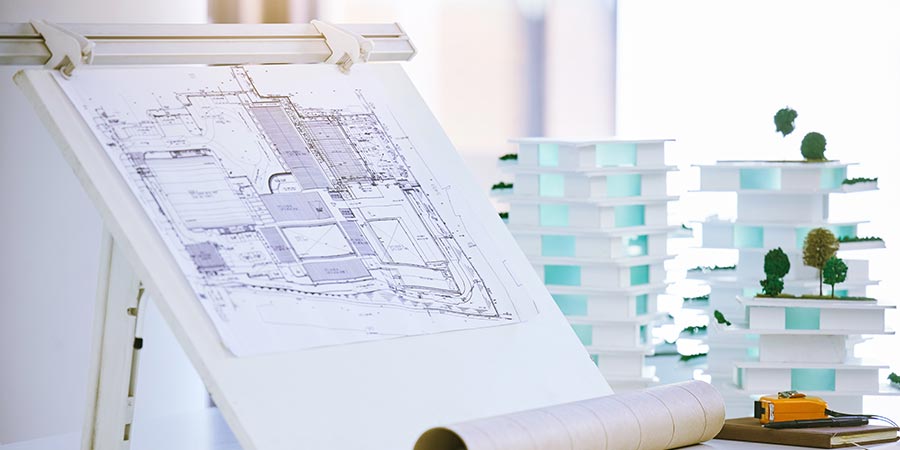
At the core of extraordinary architecture lies one foundational process. Good design starts with a clear understanding of the location. Site analysis is the process of examining a project’s physical, environmental, regulatory, and social factors. This analysis is crucial for effective design. When done early and thoroughly, it turns potential challenges into creative opportunities. This helps architects find solutions that are both innovative and deeply connected to their environment.
Far from being a mere checklist exercise, practical site analysis reveals the hidden stories of a place: the way dawning light filters through neighboring buildings, how pedestrians inherently move through space, where water gathers after storms, and how regional breeze routines might be harnessed for natural ventilation. These understandings become the DNA of great architecture, informing every decision from building orientation to material selection.
The Strategic Value of Early Site Analysis
Performing site analysis at the beginning of schematic design yields profits that combine throughout the project lifecycle. Early evaluation identifies potential issues and limitations before they become expensive problems. This allows architects to employ site-friendly strategies from the outset, rather than making changes later.
This proactive approach significantly reduces the likelihood of unexpected issues during a project. For example, you might discover poor soil conditions after the foundations are already designed. You may also discover that solar access is blocked once the building orientation is established. Additionally, local zoning rules may conflict with the proposed design after months of development. Each avoided revision saves not only time and money but also preserves the design’s integrity and the client’s confidence.
Perhaps most importantly, early site analysis ensures that the resulting architecture genuinely belongs to its place. Buildings that emerge from a thorough understanding of the site tend to age gracefully, perform better environmentally, and create more meaningful experiences for their users. They become integral parts of their communities rather than objects imposed upon them.
Case Studies: Masterful Site Response
Seattle Central Library: Urban Choreography
OMA + LMN Architects
The Seattle Central Library is a testament to how demanding metropolitan sites can inspire architectural innovation. Founded on a vertical downtown block framed by busy streets and towering neighbors, the site presented a complex puzzle of pedestrian flows, dramatic topography, and competing urban pressures.
Site Challenges:
The 38,000-square-foot site dropped approximately 30 feet from north to south, presenting accessibility challenges while offering potential for dynamic internal spaces. Heavy pedestrian traffic along 4th Avenue demanded careful consideration of entry sequences, while the metropolitan canyon effect limited natural light penetration. Strict downtown zoning mandated maximum floor area utilization while preserving street-level activation.
Analysis and Response:
The design team conducted extensive pedestrian flow studies, mapping how individuals moved through the surrounding blocks at different times of day. They analyzed sight lines from various approach angles, studying how the building would be perceived by users arriving from the light rail station, nearby offices, and residential areas to the east.
Solar studies revealed that conventional building orientations would create shadowed interiors for much of the day. Instead of fighting this constraint, the architects developed a strategy of stacked and shifted platforms, each angled to capture available light while creating distinctive spaces within.
The building’s crystalline form emerged directly from these site imperatives. Its faceted glass exterior reflects the city’s energy while its strategic transparencies create visual connections between interior activities and street life. The sloping “Living Room” on the fourth floor transforms the site’s topographical challenge into its most celebrated space—a soaring public area that feels both intimately scaled and grandly civic.
Fallingwater: Architecture in Conversation with Nature
Frank Lloyd Wright
Wright’s masterpiece in rural Pennsylvania demonstrates how deep site engagement can produce architecture that transcends mere building to become landscape architecture in the truest sense. The remote woodland site, dominated by a dramatic waterfall cascading over layered sandstone ledges, initially suggested a conventional approach: build nearby with views toward the water.
Site Challenges:
The rugged terrain featured significant elevation changes, dense forest coverage, and the central drama of Bear Run’s 30-foot waterfall. The client, Edgar Kaufmann Sr., envisioned a retreat where his family could enjoy views of the falls from the comfort of indoor spaces. The rocky site presented structural challenges, while the remote location complicated material delivery and construction logistics.
Wright’s Revolutionary Analysis:
Rather than accepting the conventional wisdom of building with a view, Wright spent considerable time on-site, studying not just what could be seen but what could be felt, heard, and experienced. He analyzed the geology in detail, understanding how the sandstone ledges were formed and how they might support cantilevered construction.
Crucially, Wright studied the sensory experience of the place—how the sound of falling water created natural acoustics, how mist from the falls affected humidity and temperature, how light filtered through the forest canopy at different seasons. He realized that the most powerful experience would come not from looking at the waterfall but from living with it as an integral part of daily life.
The resulting design places the main living spaces directly over the falls, supported by carefully calculated cantilevers that echo the natural stone ledges. Local sandstone was quarried on-site and laid to mirror the existing rock formations, making the building appear to emerge organically from the landscape. Terraces extend over the water like natural promontories, while the constant sound of flowing water becomes the house’s soundtrack.
Masdar City: Designing for Extreme Climate
Foster + Partners
The ambitious master plan for Masdar City in Abu Dhabi represents one of the most comprehensive examples of climate-responsive design at an urban scale. Located in one of the world’s harshest desert environments, the project required unprecedented analysis of environmental conditions to create a livable, sustainable community.
Site Challenges:
The 6-square-kilometer site experiences summer temperatures regularly exceeding 45°C (113°F), with humidity levels that make outdoor activity nearly unbearable for much of the year. Sandstorms occur frequently, carrying abrasive particles that can damage equipment and buildings. Water is extremely scarce, while solar radiation is intense year-round.
Comprehensive Environmental Analysis:
The design team conducted multi-year climate studies, analyzing not just average conditions but extreme weather events and seasonal variations. Wind tunnel testing revealed how different urban configurations would affect air movement and heat island effects. Solar analysis mapped radiation patterns throughout the year, identifying optimal orientations for both shade creation and energy generation.
Traditional Arab urban planning provided crucial precedents. The team studied historical cities like Shibam in Yemen and old Doha, analyzing how narrow streets, courtyard buildings, and strategic building heights created comfortable microclimates in similar harsh conditions.
Design Response:
Masdar City’s master plan creates a car-free pedestrian environment with streets narrow enough to provide continuous shade. Buildings are positioned to channel cooling breezes while blocking hot winds and sand. A central courtyard system, inspired by traditional Islamic architecture, creates cool zones where evaporation from water features provides natural air conditioning.
The city’s infrastructure is integrated into its climate response: district cooling systems reduce energy consumption by 70% compared to conventional approaches, while rooftop solar arrays generate more energy than the city consumes. Even construction materials were selected for their thermal performance and ability to withstand sandstorm erosion.
Overcoming Common Site Analysis Challenges
The Data Quality Dilemma
The Challenge:
Outdated surveys, incomplete utility information, and generic environmental data create false foundations for design decisions. Many projects begin with survey information that’s years old, missing crucial details about recent construction, utility relocations, or environmental changes. Generic climate data from distant weather stations may not reflect site-specific microclimate conditions.
Strategic Solutions:
Modern site analysis demands a multi-layered approach to data collection. High-resolution satellite imagery provides current context, while LiDAR scanning can capture precise topographical information, including vegetation and built features. Establishing relationships with local surveyors, utility companies, and municipal offices ensures access to the most current regulatory and infrastructure information.
For environmental data, combining regional climate information with site-specific monitoring provides a more accurate picture. Even short-term data logging for temperature, humidity, wind, and solar exposure can reveal significant variations from regional averages.
Time and Budget Pressures
The Challenge:
Compressed project schedules and tight budgets often pressure teams to minimize analysis time, leading to reactive rather than proactive design approaches. Clients may view extensive site analysis as unnecessary overhead, preferring to “get on with design.”
Efficient Analysis Strategies:
The key lies in developing systematic approaches that maximize insight while minimizing time investment. Standardized checklists ensure comprehensive coverage without redundant effort. Digital tools can automate many analysis tasks—solar studies, wind modeling, and regulatory compliance checking can now be performed rapidly using specialized software.
Building templates for common site types (urban infill, suburban commercial, rural residential) allows teams to focus analysis efforts on unique conditions rather than repeating basic investigations. Training team members in efficient field survey techniques and digital documentation methods further streamlines the process.
Stakeholder Alignment
The Challenge:
Different stakeholders—owners, developers, municipal authorities, community groups—often have conflicting priorities and interpretations of site constraints and opportunities. What the architect sees as a design opportunity, the developer might view as an expensive complication, while neighbors may have concerns about privacy or traffic impacts.
Building Consensus Through Visualization:
Site analysis becomes most powerful when it’s clearly communicated to all stakeholders. Three-dimensional visualizations showing sun paths, wind patterns, and view corridors help non-technical stakeholders understand complex site conditions. Shadow studies demonstrating seasonal variations in daylight can build support for building orientations that might otherwise seem arbitrary.
Interactive presentations where stakeholders can see how different design approaches respond to site conditions create more informed discussions. When everyone understands why certain decisions are necessary—building height limits to preserve neighbors’ solar access, setback requirements to accommodate mature trees, orientation choices to minimize glare—consensus becomes more achievable.
Regulatory Navigation
The Challenge:
Zoning codes, environmental regulations, accessibility requirements, and historic preservation guidelines create complex webs of constraints that can seem to conflict with good design. Regulations written for generic conditions may not accommodate site-specific solutions, while multiple approval processes can stretch project timelines.
Proactive Compliance Strategy:
Early engagement with regulatory authorities can transform potential conflicts into collaborative problem-solving opportunities. Presenting site analysis findings to planning staff before formal submission demonstrates thoroughness while identifying potential issues early in the process.
Understanding the intent behind regulations—not just their letter—enables more creative compliance approaches. When architects can demonstrate how alternative solutions achieve regulatory goals while responding to site conditions, authorities are often willing to consider innovative approaches.
The AI Revolution in Site Analysis
Artificial intelligence is fundamentally changing how architects understand and respond to site conditions, making sophisticated analysis accessible to practices of all sizes while dramatically accelerating the evaluation process.
Automated Climate Modeling
Spacemaker by Autodesk represents a new generation of AI-powered site analysis tools. The platform automatically generates and evaluates hundreds of design alternatives based on site conditions, regulatory requirements, and performance criteria. By inputting basic site parameters—location, zoning constraints, program requirements—architects can rapidly explore how different massing strategies respond to sun angles, wind patterns, and noise sources.
The tool’s strength lies not in replacing human design judgment but in expanding the range of options considered. Traditional practice might evaluate three or four massing alternatives; Spacemaker can assess hundreds, identifying high-performing solutions that might never have been considered manually.
Feasibility Analysis at Scale
TestFit automates the tedious process of testing different building configurations against site constraints and market requirements. The platform rapidly generates optimized layouts that maximize rentable area while respecting setbacks, parking requirements, and other site limitations. For architects working on multiple similar projects, this automation enables more time for creative refinement rather than repetitive constraint-checking.
Comprehensive Site Intelligence
UrbanFootprint aggregates massive datasets about demographics, transportation patterns, environmental risks, and infrastructure capacity, providing architects with unprecedented insight into site context. The platform can reveal hidden site characteristics—flood risk patterns, commuter flows, demographic shifts—that significantly impact design decisions but might be overlooked in conventional analysis.
Performance Optimization
Delve, developed by Sidewalk Labs, uses machine learning to optimize site layouts for multiple performance criteria simultaneously. The tool can balance competing priorities—maximizing daylight while minimizing energy consumption, preserving views while ensuring privacy—generating solutions that human designers might not discover through linear optimization approaches.
Real-Time Documentation
Drone technology has revolutionized site documentation, enabling rapid, comprehensive surveys of large or difficult-to-access sites. Modern drones equipped with LiDAR sensors can generate accurate topographical maps and 3D models in hours rather than weeks, while high-resolution cameras document existing conditions with unprecedented detail.
The integration of drone surveys with AI analysis platforms creates powerful workflows: raw site data can be processed through machine learning algorithms that identify vegetation types, assess soil conditions from surface characteristics, and even predict drainage patterns based on topographical analysis.
Building Excellence Through Understanding
The most successful architectural projects share a common characteristic: they demonstrate a deep understanding of their places. This understanding comes not from intuition alone but from systematic, thorough analysis that reveals both obvious and subtle site characteristics.
Site analysis is ultimately about asking the right questions: How does this place want to be built upon? What natural systems should be preserved or enhanced? How can architecture contribute to rather than detract from its context? The tools and methods may evolve, but these fundamental questions remain constant.
The architects who consistently produce exceptional work are those who see site analysis not as a burden to be minimized but as an opportunity to be maximized. They understand that constraints spark creativity, that problems contain solutions, and that the path to architectural innovation runs through intimate knowledge of place.
Whether working on urban infill projects or rural retreats, residential developments or institutional buildings, architects who invest in thorough site analysis consistently deliver projects that exceed expectations. Their buildings perform better, age more gracefully, and create more meaningful experiences for users. Most importantly, they contribute positively to the larger urban and natural environments of which they become part.
In an era of increasing environmental awareness and urban complexity, the ability to read sites skillfully and respond creatively to their characteristics has never been more valuable. Site analysis remains architecture’s most essential skill—the foundation upon which all great design is built.
For architectural firms looking to systematize and scale their approach to site analysis, consider exploring franchise opportunities that provide proven methodologies, advanced tools, and ongoing support. Discover how standardized excellence in site analysis can become a competitive advantage for growing practices with Uppteam.


















